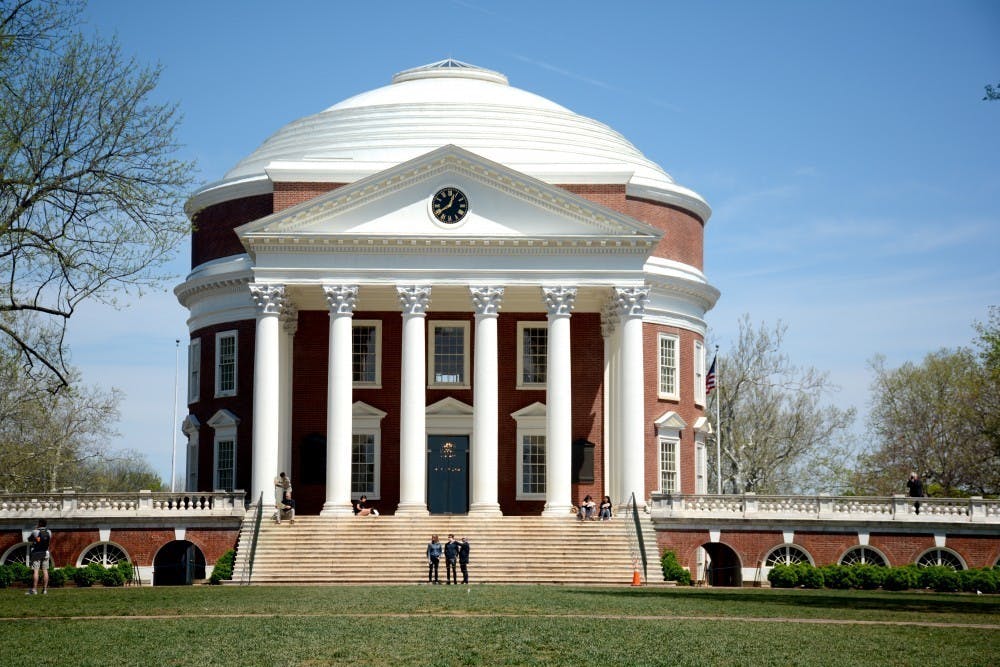The Class of 2024 is comprised of 3,785 students, the lowest number of enrolled students since the 2016 admissions cycle and the most diverse class in the University’s history.
Wes Hester, deputy University spokesperson and director of media relations, said that the University is excited to welcome the Class of 2024 during what has been a challenging year.
“To do this and meet enrollment targets during such challenging times is remarkable, and speaks to the value and respect that an education from U.Va. carries,” Hester said.
Despite the unusual circumstances, the Class of 2024 is still 40 students over the University’s enrollment target of 3,750, something Dean of Admissions Gregory Roberts described as a “big accomplishment.”
“In a normal year I would be excited about that,” Roberts said. “Given what we have been through this year I am very excited.”
The University received a record-breaking 41,027 applications for the Class of 2024 and offered admission to 9,394 students, dropping the acceptance rate to 23 percent — down from 23.8 percent in 2019.
This was the first admissions cycle since 2006 that had three possible enrollment paths — early decision, early action and regular decision. Early decision applicants made a binding commitment to attend the University and withdraw all other applications if admitted. This application choice yielded 718 admitted students.
Although the acceptance rate did decline for the Class of 2024, Dean of Admissions Gregory Roberts said that this was not necessarily due to the early decision option. According to Roberts, because the University overenrolled the Class of 2023, they had fewer spaces to offer for the Class of 2024.
As last year was the University’s first time reinstating early decision after a 12-year hiatus, Roberts said that some applicants were most likely not aware of the new plan, which resulted in only about five percent of total applicants taking the early decision route.
“There were concerns by some that we would admit too high of a percentage of the class early decision,” Roberts said. “But, our intent all along was to review early decision like we reviewed all the candidates. And I think that in the end, the fact that less than 10 percent of our offers went into the early decision pool confirms that.”
Over the last six years, first-year enrollment trends show an increase of about 0.5 to 1 percent per year in minority, first-generation and low-income students.
37 percent of the Class of 2024 are racial minorities, compared to 35 percent for the Class of 2023. 17.2 percent of the class is Asian, 7.1 percent is African American, 7.1 percent is Hispanic/Latinx and 5.5 percent is multiracial. This compares to last year’s 16.5 percent, 6.8 percent, 6.4 percent, and 5.2 percent, respectively.
37.3 percent of the Class of 2024 are students with need-based financial aid, down from 39 percent the previous year. 8.4 percent are from low-income families and 13.6 percent of those enrolled are first generation college students, compared to last year’s 12.8.
The Class of 2024 also contains more women than men — the class is made up of 2,153 women compared to 1,632 men.
In-state residents make up 68.1 percent of the class, whereas out-of-state residents account for 31.9 percent of the first-year class.
This admissions cycle was confronted with unique challenges due to the effects of the COVID-19 pandemic and transitioning to a virtual recruitment process. Regular admissions decisions were released just after all U.Va. classes were moved online and all students were sent home, so the University’s admissions team had to create and navigate a virtual recruitment process for admitted students.
According to Dean of Admission Greg Roberts, the University typically expects roughly 100 students to have a change of plan in their enrollment from the time of official enrollment in May through the end of the add/drop period in October. The reasoning for this change of plans varies student-by-student, but is often due to financial constraints, the ability to take a gap year or late admission into another university.
To accommodate for this fluctuation, the University usually over-enrolls their class size at the time of admission so that as some students experience a change of plan, by October the number of students enrolled will be near the enrollment target of 3,750.
Due to COVID-19, the University anticipated more students than the typical 100 might have a change of plans from May to October, according to Dean of Admissions Gregory Roberts.
By October, nearly 300 members of the Class of 2024 reported a change in their enrollment status.
150 of those students are taking a gap year — twice the normal average, which is typically around 75. Aside from these individuals, some students faced unique challenges for this semester due to travel restrictions and COVID-19 regulations around the world. 30 of these students plan to enroll in the spring semester.
Correction: A previous version of this article included outdated information on the total number of applications, total number of offers, acceptance rate and total number of students admitted through early decision. The article has been updated to reflect the updated counts for each of these categories.







